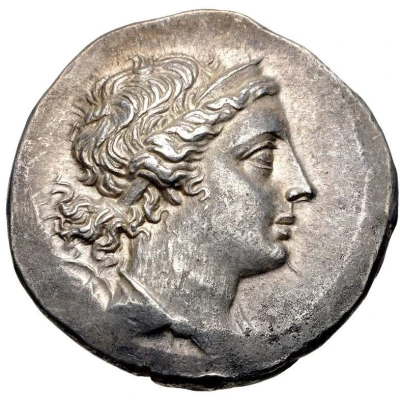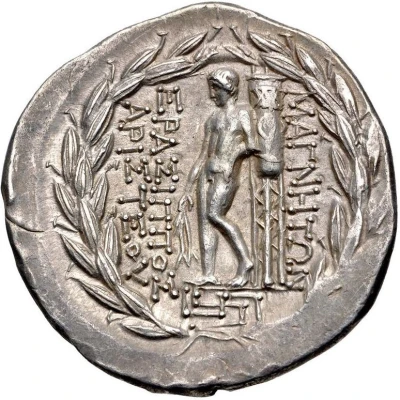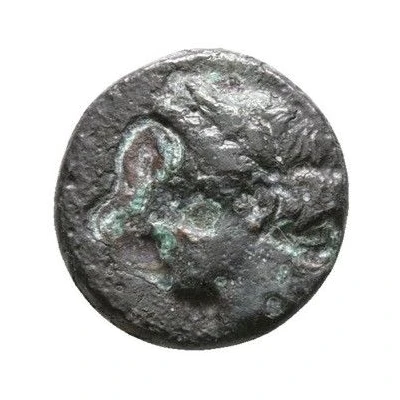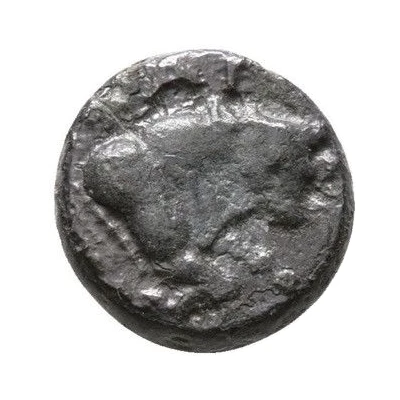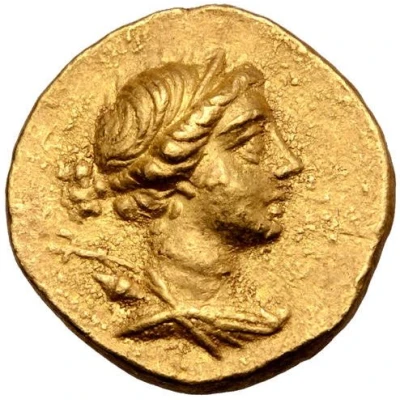
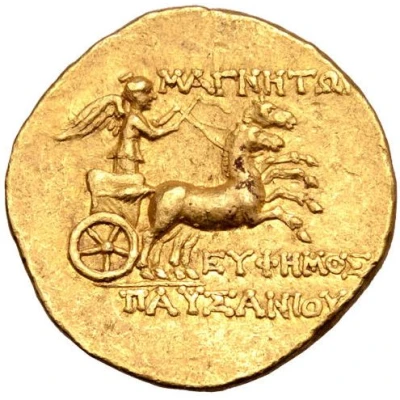

Stater - Euphemos 155 BC - 140 BC
| Gold | 8.43 g | 19 mm |
| Issuer | Magnesia ad Meandrum (Ionia) |
|---|---|
| Type | Standard circulation coin |
| Years | 155 BC - 140 BC |
| Value | Stater (20) |
| Currency | Drachm |
| Composition | Gold |
| Weight | 8.43 g |
| Diameter | 19 mm |
| Shape | Round (irregular) |
| Technique | Hammered |
| Orientation | Medal alignment ↑↑ |
| Demonetized | Yes |
| Updated | 2024-10-10 |
| Numista | N#424845 |
|---|---|
| Rarity index | 100% |
Reverse
Nike, holding kentron and reins, driving fast biga to right.
Script: Greek
Lettering:
MAΓNHTΩN
EYΦHMOΣ ΠAYΣANIOY
Translation:
of the Magnesians
Euphemos, son of Pausanias
Comment
Unpublished in the standard references, but for the magistrate Euphemos son of Pausanias and dating of the stephanophoric tetradrachms of Magnesia, cf. N. F. Jones, The Autonomous Wreathed Tetradrachms of Magnesia-on-Maeander", ANSMN 24, 1979, pp. 63-109, especially nos. 8-25; for the obverse Artemis bust type cf. B. Head, History of the Coinage of Ephesus, London 1880, p. 69, 1-7, pl. 5 and Mørkholm, Early Hellenistic Coinage, Cambridge 1991, 657 = Gulbenkian 985.
Interesting fact
The Euphemos coin is considered a rare and valuable artifact, with only a few examples known to exist in the world. It's believed that the coin was minted during the reign of King Euphemos, who ruled over the ancient city of Magnesia ad Meandrum in Ionia (modern-day Turkey) in the 2nd century BC. The coin's design features an image of the king on one side and the goddess Athena on the other, signifying the city's cultural and religious ties to ancient Greece. Despite its age, the coin remains in remarkable condition, with its gold content and intricate details still intact, making it a highly sought-after piece among collectors and historians.
Price
| Date | Mintage | VG | F | VF | XF | AU | UNC |
|---|---|---|---|---|---|---|---|
| ND (155 BC - 140 BC) | - | - | - | - | - | - |
Values in the table are based on evaluations by sales realized on Internet platforms. They serve as an indication only for Stater - Euphemos (155 BC - 140 BC) coin.
